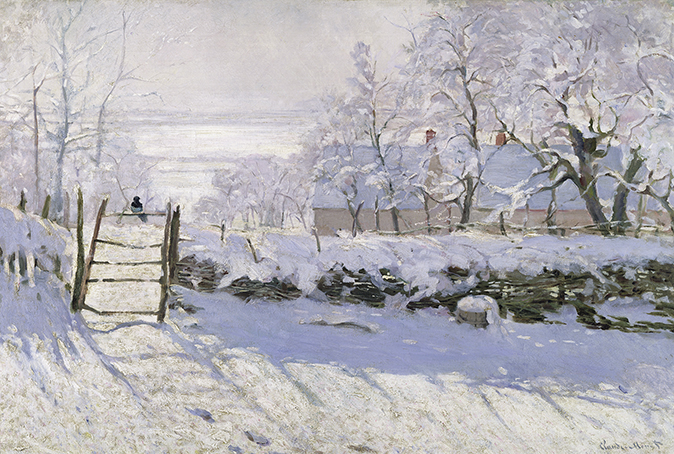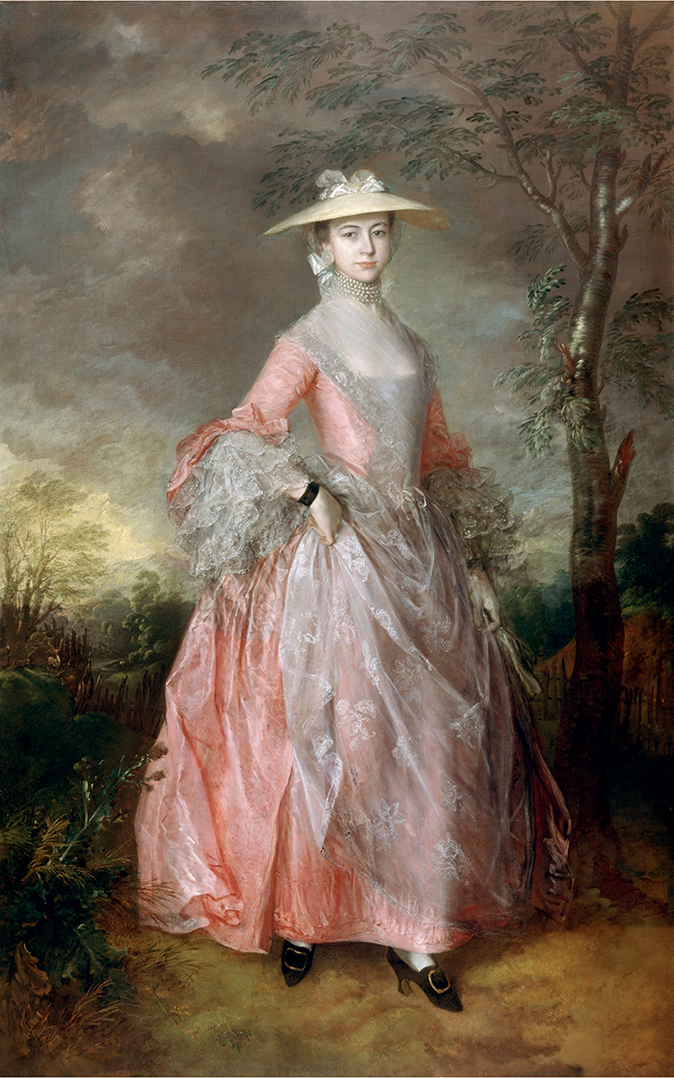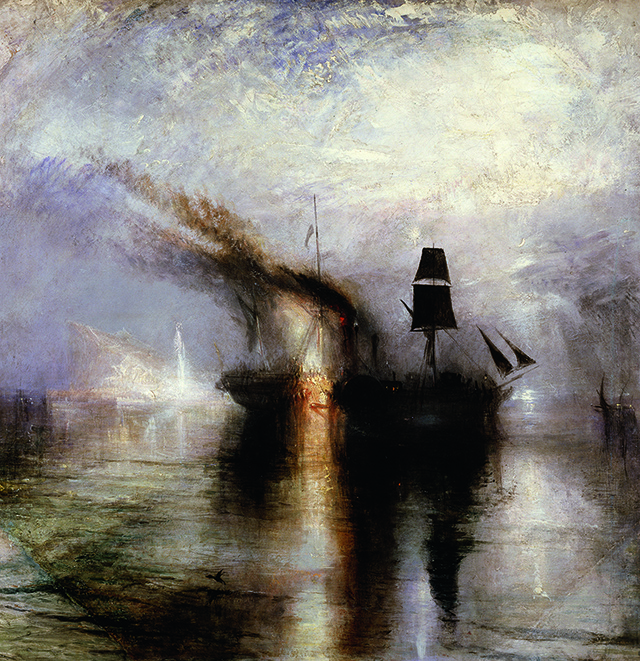My favourite painting: Kipper Williams
'I’ve always been fascinated by the different ways artists have depicted snow.'


The Magpie, 1868–69, by Claude Monet (1840–1926), 35in by 51in, Musée d’Orsay, Paris, France
Kipper Williams says:
I’ve always been fascinated by the different ways artists have depicted snow. I love the winter scenes in Giles cartoon annuals, in which a blanket of white serves as a backdrop for his endlessly inventive visual jokes. A century earlier, Claude Monet painted The Magpie, one of his atmospheric Normandy snowscapes. The scene reminds me of the excitement I used to feel crunching across the field at the back of my Cheshire home the morning after a heavy snowfall. Monet’s field was hundreds of miles away, but the magical world he created whisks me back to my childhood.
Kipper Williams is a cartoonist. His new book, All in Tents and Porpoises: The Best of Kipper Williams, was published at the end of last year.
John McEwen comments on The Magpie:
Monet’s formative artistic influence in Le Havre was the local painter Eugène Boudin (1826–98). Outdoor oil painting was facilitated by the invention of the metal paint tube and Boudin was an ardent advocate. their painting trips taught Monet ‘to understand nature’ and learn ‘to love it passionately’.
In Paris, where he studied briefly with the academic painter Gleyre, he found fellow student enthusiasts for pictures of landscape and daily life in Renoir, Sisley and the rich Bazille. Bazille and an aunt augmented his inadequate allowance from home— Monet’s father, a wholesale grocer, deplored his son’s career choice.
The Salon was the key to creative success, but, as Monet’s artistic interests were opposed to convention, his submissions were rarely accepted. Crisis came when Camille Doncieux, his young model and mistress, gave birth to their son Jean. He survived a despairing jump from a bridge into the Seine.
His first patron, Louis Gaudibert, a shipbuilder, came to the family’s rescue by helping with the rent of a cottage at Etretat, near Le Havre. There, Monet painted The Magpie, the largest of his snowscapes, a subject reintroduced since 1856 by Gustave Courbet, whose revolutionary gusto and taste for realism were an inspiration to the young Impressionists. Courbet and Bazille were Jean’s godfathers.
Sign up for the Country Life Newsletter
Exquisite houses, the beauty of Nature, and how to get the most from your life, straight to your inbox.
From Etretat, Monet wrote to Bazille: ‘I’m very happy, very delighted... I go out into the country which is so lovely here that I perhaps find it even more agreeable in winter than in summer. And then in the evening, dear fellow, I come home to my little cottage to find a good fire and a dear little family. If only you could see how sweet your godson is.’

My favourite painting: Norman Rosenthal
'Countess Howe became the woman of my dreams, and I would lie awake at night dreaming of unseen petticoats and

My favourite painting: Bob and Roberta Smith
Bob and Roberta Smith chooses his a J.M.W. Turner picture as his favourite painting
Country Life is unlike any other magazine: the only glossy weekly on the newsstand and the only magazine that has been guest-edited by HRH The King not once, but twice. It is a celebration of modern rural life and all its diverse joys and pleasures — that was first published in Queen Victoria's Diamond Jubilee year. Our eclectic mixture of witty and informative content — from the most up-to-date property news and commentary and a coveted glimpse inside some of the UK's best houses and gardens, to gardening, the arts and interior design, written by experts in their field — still cannot be found in print or online, anywhere else.
-
 380 acres and 90 bedrooms on the £25m private island being sold by one of Britain's top music producers
380 acres and 90 bedrooms on the £25m private island being sold by one of Britain's top music producersStormzy, Rihanna and the Rolling Stones are just a part of the story at Osea Island, a dot on the map in the seas off Essex.
By Lotte Brundle
-
 'A delicious chance to step back in time and bask in the best of Britain': An insider's guide to The Season
'A delicious chance to step back in time and bask in the best of Britain': An insider's guide to The SeasonHere's how to navigate this summer's top events in style, from those who know best.
By Madeleine Silver
-
 'As a child I wanted to snuggle up with the dogs and be part of it': Alexia Robinson chooses her favourite painting
'As a child I wanted to snuggle up with the dogs and be part of it': Alexia Robinson chooses her favourite paintingAlexia Robinson, founder of Love British Food, chooses an Edwin Landseer classic.
By Charlotte Mullins
-
 The Pre-Raphaelite painter who swapped 'willowy, nubile women' for stained glass — and created some of the best examples in Britain
The Pre-Raphaelite painter who swapped 'willowy, nubile women' for stained glass — and created some of the best examples in BritainThe painter Edward Burne-Jones turned from paint to glass for much of his career. James Hughes, director of the Victorian Society, chooses a glass masterpiece by Burne-Jones as his favourite 'painting'.
By Charlotte Mullins
-
 'I can’t look away. I’m captivated': The painter who takes years over each portrait, with the only guarantee being that it won't look like the subject
'I can’t look away. I’m captivated': The painter who takes years over each portrait, with the only guarantee being that it won't look like the subjectFor Country Life's My Favourite Painting slot, the writer Emily Howes chooses a work by a daring and challenging artist: Frank Auerbach.
By Toby Keel
-
 My Favourite Painting: Rob Houchen
My Favourite Painting: Rob HouchenThe actor Rob Houchen chooses a bold and challenging Egon Schiele work.
By Charlotte Mullins
-
 My Favourite Painting: Jeremy Clarkson
My Favourite Painting: Jeremy Clarkson'That's why this is my favourite painting. Because it invites you to imagine'
By Charlotte Mullins
-
 The chair of the National Gallery names his favourite from among the 2,300 masterpieces — and it will come as a bit of a shock
The chair of the National Gallery names his favourite from among the 2,300 masterpieces — and it will come as a bit of a shockAs the National Gallery turns 200, the chair of its board of trustees, John Booth, chooses his favourite painting.
By Toby Keel
-
 'A wonderful reminder of what the countryside could and should be': The 200-year-old watercolour of a world fast disappearing
'A wonderful reminder of what the countryside could and should be': The 200-year-old watercolour of a world fast disappearingChristopher Price of the Rare Breed Survival Trust on the bucolic beauty of The Magic Apple Tree by Samuel Palmer, which he nominates as his favourite painting.
By Charlotte Mullins
-
 My favourite painting: Andrew Graham-Dixon
My favourite painting: Andrew Graham-Dixon'Lesson Number One: it’s the pictures that baffle and tantalise you that stay in the mind forever .'
By Country Life